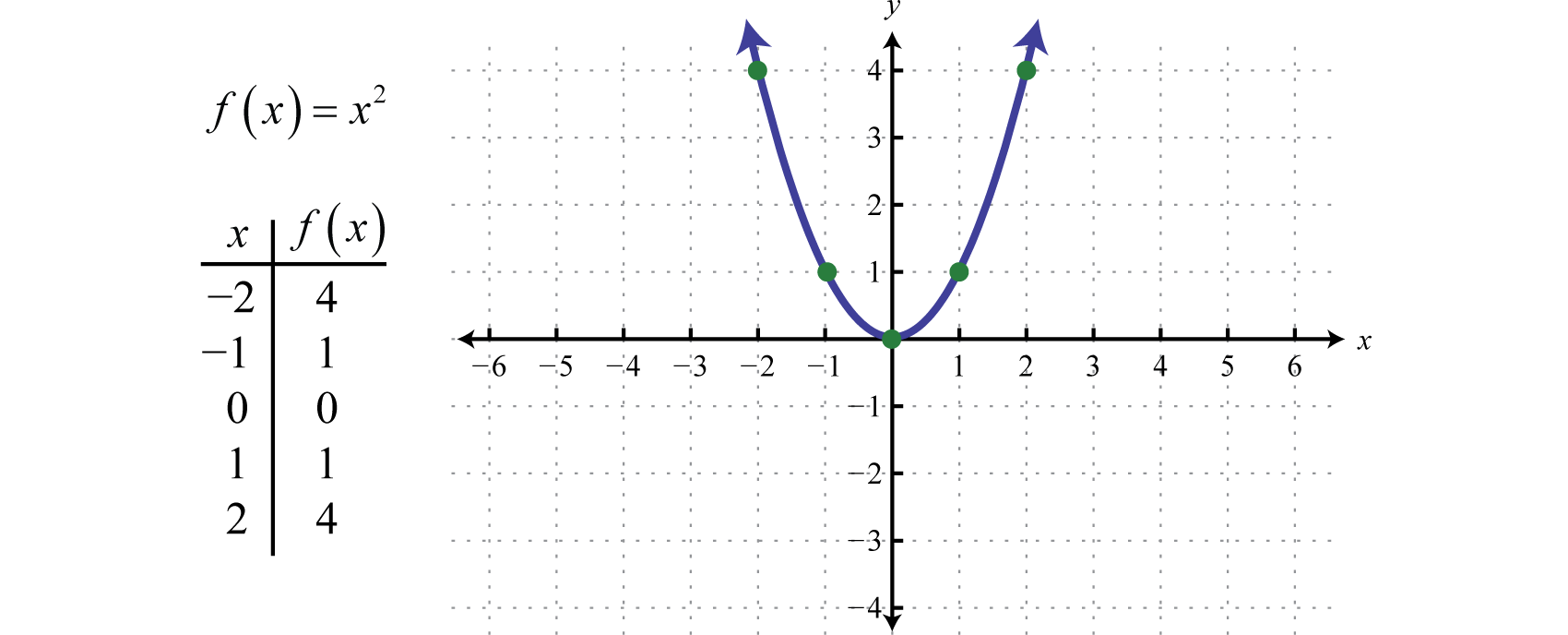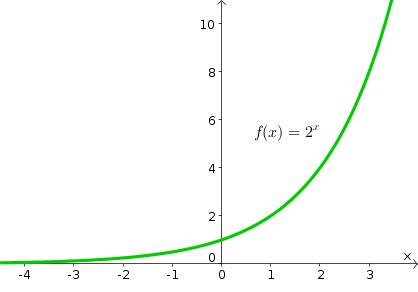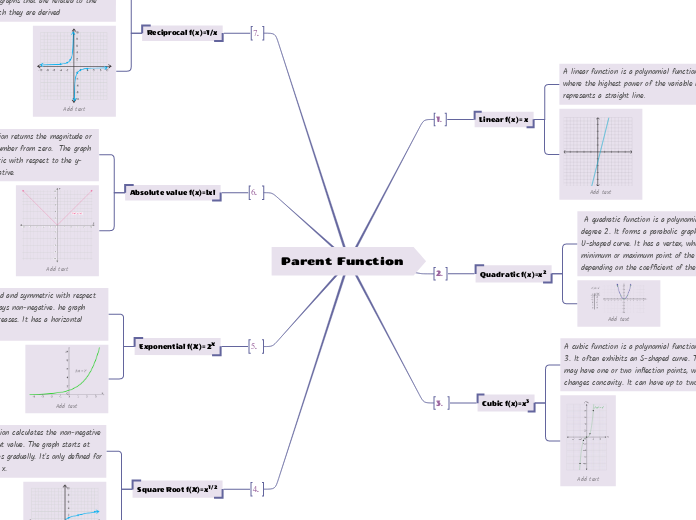Parent Function
Linear f(x)= x
A linear function is a polynomial function of degree 1, where the highest power of the variable is 1. It represents a straight line.

Add text
Quadratic f(x)=x2
A quadratic function is a polynomial function of degree 2. It forms a parabolic graph. The graph is a U-shaped curve. It has a vertex, which is the minimum or maximum point of the parabola, depending on the coefficient of the squared term.

Add text
Cubic f(x)=x3
A cubic function is a polynomial function of degree 3. It often exhibits an S-shaped curve. The graph may have one or two inflection points, where it changes concavity. It can have up to two real roots.

Add text
Reciprocal f(x)=1/x
A reciprocal is the multiplicative inverse of a number. Reciprocal functions often have characteristics and graphs that are related to the functions from which they are derived

Add text
Absolute value f(x)=lxl
The absolute value function returns the magnitude or absolute distance of a number from zero. The graph is V-shaped and symmetric with respect to the y-axis. It's always non-negative.
Add text
Exponential f(X)= 2X
The graph is V-shaped and symmetric with respect to the y-axis. It's always non-negative. he graph grows rapidly as x increases. It has a horizontal asymptote at y = 0.

Add text
Square Root f(X)=x1/2
The square root function calculates the non-negative square root of the input value. The graph starts at the origin and increases gradually. It's only defined for non-negative values of x.

Add text
